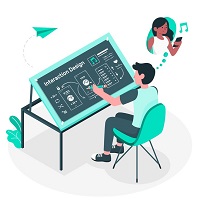How to Use Salesforce Grantmaking Software for Nonprofits

Strong 8k brings an ultra-HD IPTV experience to your living room and your pocket.
Grantmaking is one of the most powerful tools nonprofits have to make a lasting impact. But traditional methods—managing applications through emails, tracking disbursements in spreadsheets, and relying on siloed data—can make the entire process overwhelming, slow, and error-prone.
That’s where Salesforce for nonprofit organization operations truly shines.
Salesforce offers a purpose-built solution: Nonprofit Cloud for Grantmaking. But rather than just seeing it as a software platform, nonprofits can think of it as a strategy-enabling engine — one that streamlines planning, enhances collaboration, and brings visibility into results.
In this blog, we’ll break down how nonprofits can actively use Salesforce’s grantmaking software to strengthen their funding programs. From setup to reporting, we’ll explore step-by-step actions to help grantmakers run more efficient, transparent, and impact-focused programs.
Step 1: Set Up a Centralized Grantmaking Framework
Before diving into applications and disbursements, your first move is to set up a unified structure within Salesforce for your entire grantmaking operation.
Here’s how to start:
- Create funding program records that outline each grant’s purpose, timeline, eligibility, and budget
- Define clear intended outcomes for each program (e.g., reducing dropout rates, improving healthcare access)
- Align all your grant types, cycles, and categories in a single dashboard
With this structure in place, your team can see how individual grants contribute to broader organizational strategies and monitor where funding is going — all from a single pane of glass.
Step 2: Build and Customize Grant Applications
Rather than sending static PDFs or using external forms, nonprofits can build dynamic grant applications directly within Salesforce.
Here’s what that means in practice:
- Tailor fields and logic based on grant type, applicant category, or location
- Include auto-validation to prevent incomplete or incorrect entries
- Use branching logic to hide or show relevant questions based on answers
- Offer both short and long-form options for different stages of application
These applications are then routed through a centralized workflow — making it easy to track which have been submitted, which are in review, and which need follow-up.
Your team saves time, and grantseekers get a more intuitive experience.
Step 3: Enable Grantees With a Branded Portal
Using Salesforce Experience Cloud, you can create a grantseeker portal — an online hub where individuals or organizations can apply for grants, check their status, collaborate with program managers, and submit updates.
Nonprofits can:
- Use an out-of-the-box template to get started quickly
- Customize branding to reflect your organization’s identity
- Provide secure login access to each applicant
- Allow applicants to upload documentation, track submissions, and see their progress
This portal eliminates back-and-forth emails and makes the application and review process transparent for everyone involved.
It’s also a space where grantees can communicate with your staff, submit follow-up data, or request amendments.
Step 4: Review Applications Collaboratively
Salesforce’s grantmaking software allows nonprofit teams to collaborate efficiently when reviewing applications.
Here’s how to use it:
- Assign reviewers to specific applications based on program, expertise, or role
- Score and leave notes directly within each applicant’s record
- Set up decision-making workflows with defined criteria for approval or rejection
- Track each step of the review — including who approved or flagged specific parts
Because everything is centralized, team members can stay informed without redundant meetings or confusion over version control.
You can also set automated alerts to flag incomplete applications or track deadlines.
Step 5: Manage Grantee Budgets and Amendments in Real Time
Once grants are awarded, tracking financial alignment and program changes becomes crucial. Nonprofit teams can manage grantee budgets, reporting milestones, and requests for amendments directly within the system.
How this works:
- Each grantee has a dedicated profile with linked budget plans
- Staff and grantees can update actual vs. forecasted expenses
- Any requested changes — like deadline extensions or budget reallocations — can be reviewed and approved in the platform
- Notes and approvals are logged for transparency and auditing
This helps maintain alignment while giving flexibility to both parties when real-world situations change.
Step 6: Track Requirements, Contracts, and Disbursements
Grant compliance is about more than just spending the money — it’s about proving that it was used responsibly.
Salesforce simplifies this with centralized grant requirements and payment tracking. Here’s what your team can do:
- Set up milestone-based disbursements with approval workflows
- Upload and manage contracts and compliance documents per grantee
- Track reporting due dates with automated reminders
- Log payment history and link it to grant records
With this setup, program managers and finance teams can quickly check compliance status and ensure smooth fund disbursements, even across multiple programs or fiscal years.
Step 7: Collect Progress Reports and Support Impact Measurement
The work doesn't stop after funds are disbursed. Nonprofits must collect, analyze, and act on progress data to measure real-world impact.
Using Salesforce:
- Grantees submit regular progress reports through the same portal they used for applications
- Reports are linked to intended outcomes and goals set during the planning stage
- Data visualizations show what’s working, what’s delayed, and what needs attention
- Your team can compare actual progress to what was expected and document it for stakeholders or funders
You can also set automated reminders for grantees to submit data or schedule check-ins when progress seems off-track.
This approach shifts the focus from just “spending” to “succeeding.”
Step 8: Evaluate Outcomes and Adjust Funding Strategy
Finally, use the insights from your program data to evaluate which funding strategies are delivering results — and which may need adjustments.
Salesforce provides dashboards that aggregate:
- Funding allocation across programs
- Outcome achievement vs. targets
- Program impact by region, time, or issue area
- Grantee satisfaction feedback
- Operational bottlenecks
This helps you:
- Plan future programs based on what works
- Communicate results clearly to donors or board members
- Identify opportunities for scaling successful initiatives
- Make data-backed decisions about future disbursements
Rather than operating with assumptions, you operate with visibility and agility.
Final Thoughts
Running a grantmaking program is no longer just about accepting applications and issuing checks. Today, it’s about maximizing impact — ensuring that every dollar supports meaningful, measurable outcomes.
Salesforce's grantmaking solution helps nonprofits:
- Centralize their grant management
- Improve collaboration with grantees
- Ensure accountability
- Evaluate success in real time
But most importantly, it empowers you to focus less on administrative complexity — and more on funding what matters most.
Looking to improve your impact strategy? Talk to a trusted Salesforce nonprofit implementation partner and bring your grantmaking into the future — connected, data-driven, and mission-aligned.
Note: IndiBlogHub features both user-submitted and editorial content. We do not verify third-party contributions. Read our Disclaimer and Privacy Policyfor details.







